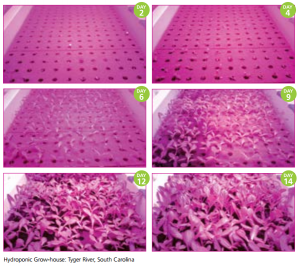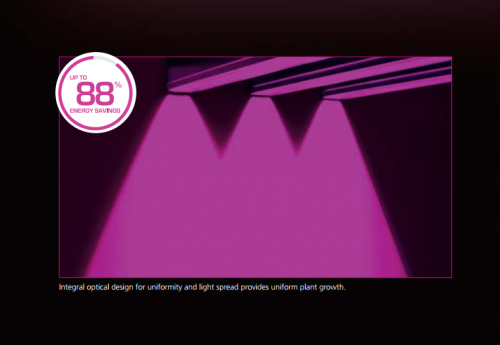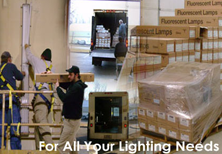LED Horticultural Lights vs. Traditional HPS Grow Lights
With each passing day, LED’s dominance in the lighting market grows exponentially. Thus it should be no surprise to learn that horticultural lighting is phasing out inefficient traditional high pressure sodium for superior LED grow lamps. Energy-efficiency and light output are factors in this, as they always are. But as we learn more about the science of horticulture, we understand how fine-tuned LED lighting can truly be the optimal grow light solution.
How do plants use light? Plants convert incoming light into chemical energy by using chlorophyll in leaves to absorb only the blue and red wavelength portions of the electromagnetic spectrum. No other wavelengths have any use to the plant.
Hubbell’s NutriLED Grow Light Fixture has taken horticultural lighting to the next level by utilizing solid state LED lighting to focus on only the relevant wavelengths. NutriLED produces 83μms of red light compared to the 80μms produced by a 600W HPS fixture. This red wavelength corresponds with Chlorophyl A, which is integral for vegetable growth. In the blue spectrum, NutriLED bests HPS 17μm to 10μm. This blue light corresponds with Chlorophyl B, which is used for seed germination, budding and flowering. μms, also known as Micromoles, are similar to lumens in that they are a metric used to identify total intensity of wavelength light from a source or fixture.
The spectrum graph above also shows that approximately 100% of the NutriLED light output is usable by plants. Nothing is wasted. All this light output from the NutriLED triggers healthy plant responses; boosting yield while reducing cost. At the same time, most of the HID light output is wasted as it is not usable by plants. HPS produces 450 μm, 360 of which is unused. Also as we know with HID, not only does it not last longer than LED but it loses it’s power and changes color drastically over time.
Heat given off from the lighting is a huge variable in the growth process. HID redirects infrared energy that causes a release of uncontrolled heat, which subsequently evaporates water, burns the plants, and tops it off by causing electrical bills to skyrocket. Comparatively speaking, LED grow fixtures like the NutriLED use less energy and produce less heat, resulting in less evaporation. This lowers electrical costs and also saves water.
Another advantage for LED grow light operations; you can think big. A 600W HPS fixture uses 4 amps – so on a standard 20amp circuit, only 5 fixtures can be utilized. On that same 20amp circuit, 42 NutriLED fixtures can used. Adding to the flexibility of the NutriLED is the fact they can be mounted in multiple configurations. Can be installed linearly or in parallel to increase the delivered micromoles.
Once again LED has lapped the field, and in the grow lighting market LED accomplished it decisively.






High quality LEDs are definitely the way to go these days. They’re just so much more efficient than other forms of grow lights. They have to be good quality lights, though. Cheap ones usually don’t deliver the promised output and often have a spectrum that isn’t usable for photosynthesis.
The only real advantage of HID lights anymore is the color for our eyes. What I mean is that the plants look the way they are supposed to under HID light, not pink like they do under LEDs. Of course, white LEDs take care of that issue.
Thanks for the post! I’m a huge fan of LED grow lights myself, the spectrum is great and the technology has come a long ways in the last few years.